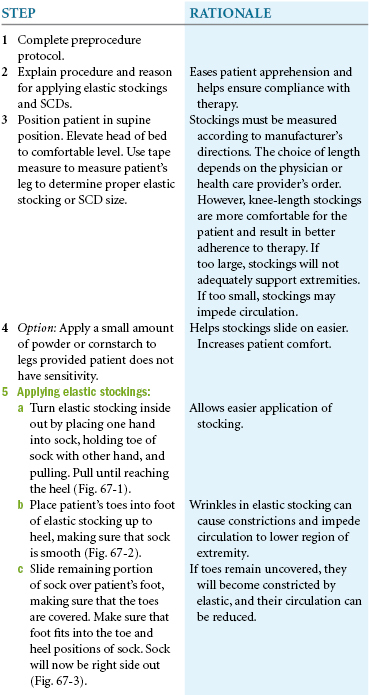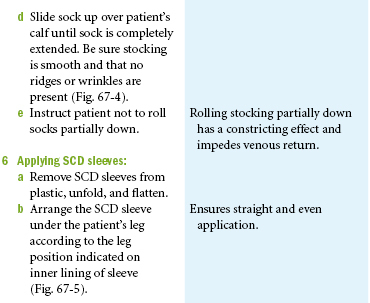Skill 67
Sequential Compression Device and Elastic Stockings
A patient may develop a deep vein thrombosis (DVT) for many reasons. Some common risk factors include injury to a vein from a fracture or surgery, immobility caused by a cast or prolonged sitting, inherited clotting disorders, obesity, smoking, and a family history (Harvard Health Publications, 2009). Three factors (known as Virchow’s triad)—hypercoagulability of the blood, venous wall damage, and blood flow stasis—contribute to DVT development (Lewis et al., 2011). Prevention, which can include anticoagulant medications, is the best approach for DVTs; however, moving the extremities, wearing compression stockings, and using foot pumps are equally important. Elastic stockings help reduce blood stasis and venous wall injury by promoting venous return and limiting venous dilation, which decreases the risk of endothelial tears. Sequential compression devices (SCDs) pump blood into deep veins, thus removing pooled blood and preventing venous stasis.
Delegation Considerations
The skill of applying elastic stockings and SCDs may be delegated to nursing assistive personnel (NAP). The nurse initially determines the size of elastic stockings and assesses the patient’s lower extremities for any signs and symptoms of DVTs or impaired circulation. The nurse directs the NAP to:







